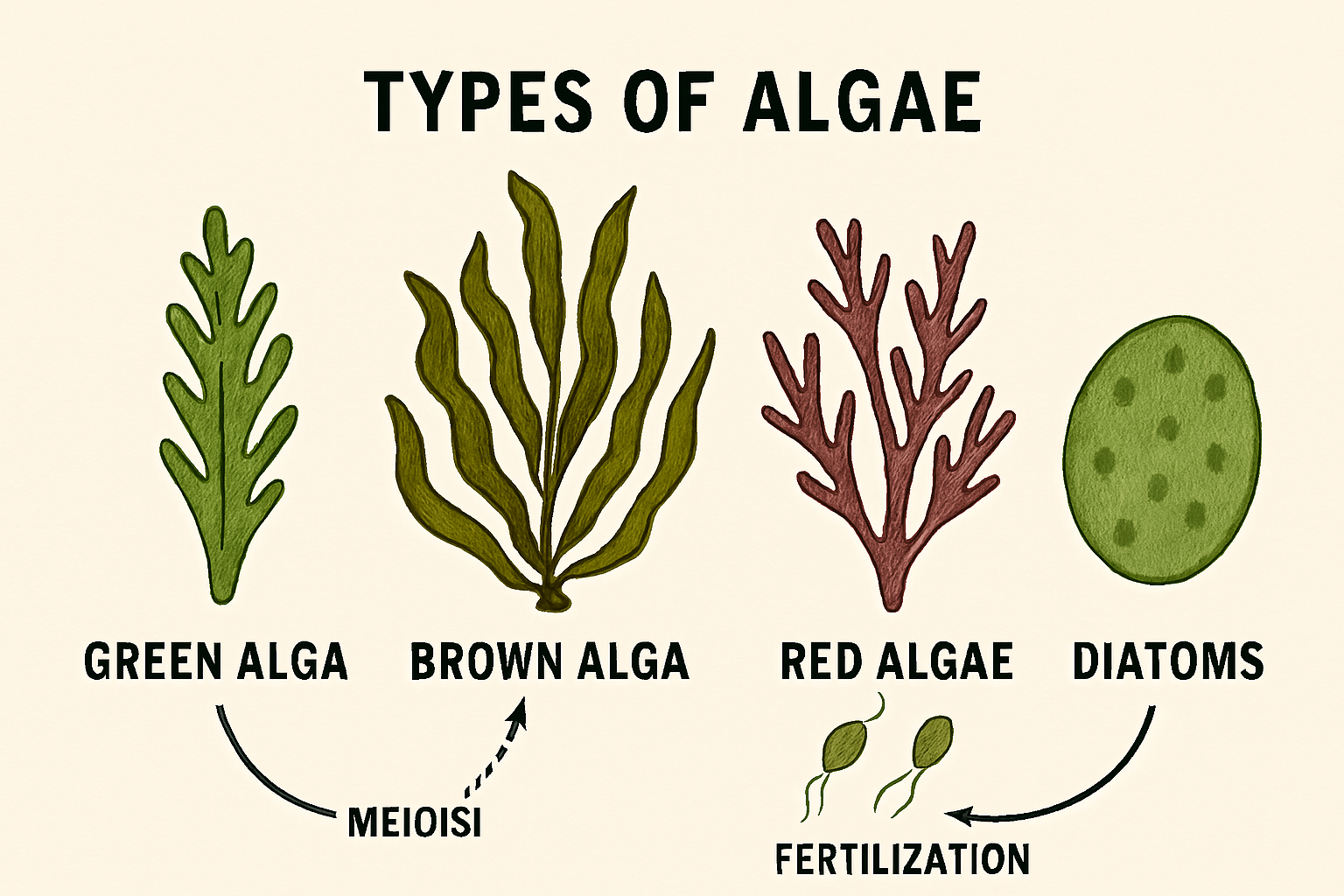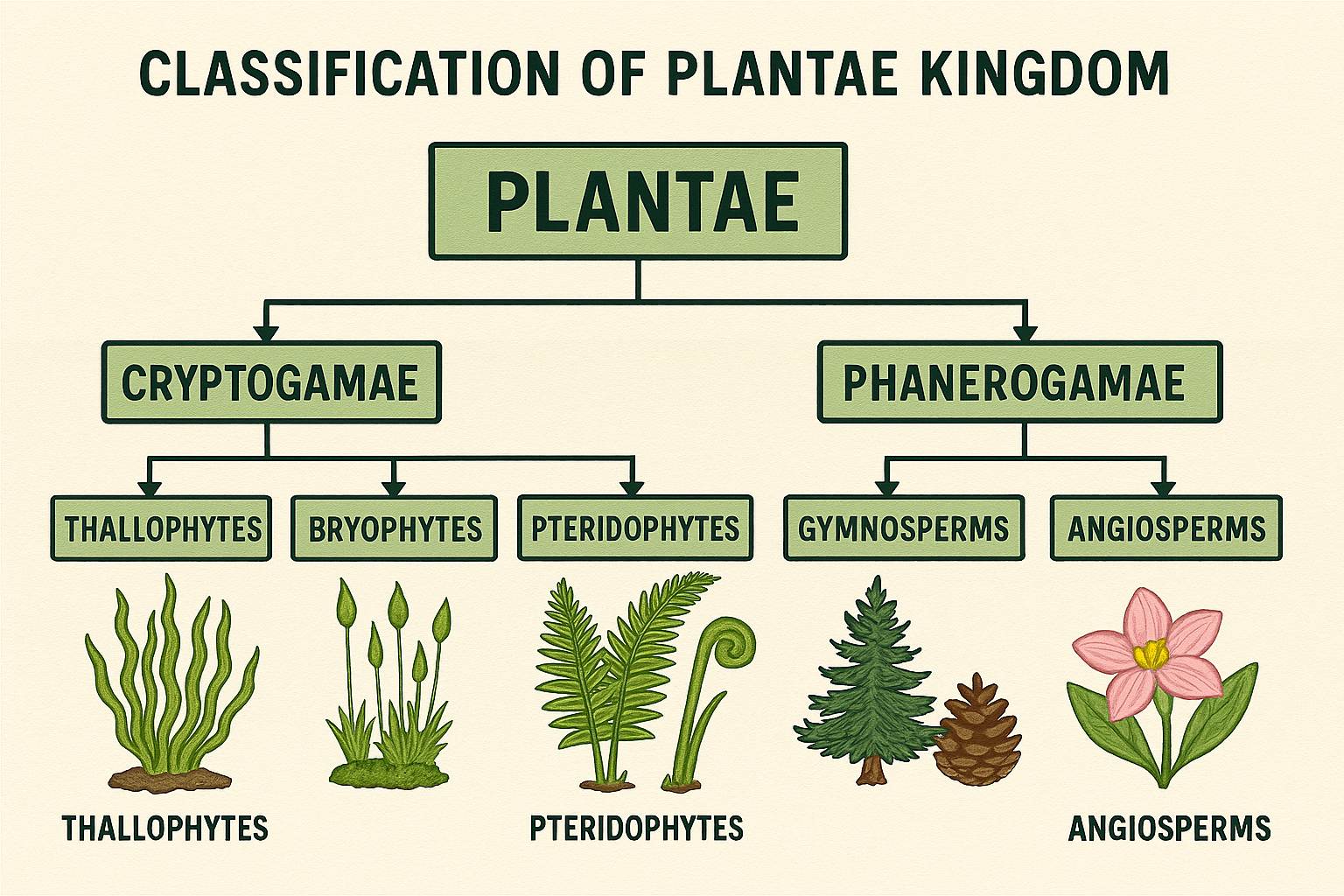22 Major Branches of Botany You Must Know

22 Major Branches of Botany You Must Know (With Examples)
Botany is the scientific study of plants. From microscopic algae to towering trees, the field of botany is vast and divided into many specialized branches. This guide lists the 22 most important branches of botany that students must know, especially for competitive exams like JIPMER, BHU, NEET, and Rajasthan CET.
1. Algalogy (Phycology)
Study of algae – simple aquatic plants that perform photosynthesis. Important for the food industry, pharmaceuticals, and environmental balance.
2. Agrostology
Study of grasses, important in agriculture and ecosystem management.
3. Anthology
Study of flowers and flowering plants (angiosperms). The term was used by botanist Bessey.
4. Aerobiology
Study of spores and microorganisms in the air. Important for allergy research and agricultural safety.
5. Agriculture
Study of plant domestication and farming. One of the oldest sciences, dating back 7000–13,000 years.
6. Agronomy
Deals with farm management and crop production. Core to sustainable agriculture.
7. Agroforestry
System of land use where trees, shrubs, and crops are grown together for ecological and economic benefits.
8. Arboriculture
Study and cultivation of ornamental trees and shrubs, especially in urban environments.
9. Agrology
Study of soils in relation to crop productivity. Crucial for improving yields and soil health.
10. Actinobiology (Radiation Biology)
Study of the effects of radiation on plant and animal tissues. Important in mutation breeding and environmental monitoring.
11. Bacteriology
Study of bacteria. Bacteria were discovered by Leeuwenhoek, term given by Ehrenberg.
12. Bioenergetics
Deals with the flow and transformation of energy in living organisms. Includes photosynthesis and respiration.
13. Biotechnology
Use of living organisms to develop industrial and medical products like antibiotics, vaccines, and enzymes.
14. Bryology
Study of bryophytes like mosses and liverworts. Indicators of pollution and key to early plant evolution.
15. Bonsai
Japanese art of growing miniature trees in containers. Involves root pruning and aesthetic shaping.
16. Demecology
Study of plant populations and their interactions with the environment.
17. Dendrology
Study of trees and shrubs, their identification, and classification.
18. Dendrochronology
Science of determining tree age using annual rings. Useful in climate studies and archaeology.
19. Economic Botany
Study of plants with economic importance, such as cotton, wheat, spices, and medicinal herbs.
20. Ecophysiology
Explores physiological adaptations of plants in different environments (e.g., desert plants).
21. Enzymology
Study of plant enzymes and their functions in metabolic pathways.
22. Ethnobotany
Study of how indigenous cultures use plants for food, medicine, rituals, and shelter.
23. Forestry or Silviculture
The study of managing, conserving, and exploring forests for their products such as timber, fuelwood, and medicinal plants. It also focuses on maintaining ecological balance, wildlife protection, and sustainable forest use.
24. Floriculture
The science and art of cultivating flowering plants for commercial purposes, decoration, and aesthetic beauty. It includes the breeding, marketing, and arrangement of ornamental flowers.
25. Food Technology
The application of scientific techniques to process, preserve, package, and store food for future use. This branch ensures food safety, quality, and nutrition through modern methods.
26. Genecology
The study of genetic variation within species in relation to environmental factors such as climate, soil, and geography. It helps in understanding adaptation and evolution.
27. Gnotobiotics
The study of germ-free life forms and their maintenance in sterile environments. It is crucial for medical research to study the role of microorganisms in health and disease.
28. Horticulture
The science of cultivating fruits, vegetables, and ornamental plants in gardens and orchards. It includes plant breeding, pest management, and post-harvest handling.
29. Histochemistry
The study of the chemical composition of cells and tissues using staining techniques and microscopy. It helps in diagnosing diseases and understanding tissue function.
30. Ikebana
The traditional Japanese art of arranging flowers in an aesthetically pleasing manner. It focuses on harmony, balance, and symbolism in floral design.
31. Immunology
The science that studies the immune system and the body’s defense against infections. It examines vaccines, allergies, autoimmune diseases, and immune responses. Edward Jenner is regarded as the father of immunology.
32. Limnology
The study of life in freshwater bodies such as lakes, ponds, and rivers. It includes research on aquatic plants, animals, microorganisms, and water chemistry. It is sometimes extended to include the study of snails.
33. Lichenology
The study of lichens—symbiotic associations between fungi and algae. It focuses on their biology, ecology, and use as environmental indicators.
34. Morphogenesis
The biological process by which cells, tissues, and organs acquire their shape during development and differentiation.
35. Monerology
The study of monerans, which are microscopic, single-celled organisms without a true nucleus, such as bacteria.
36. Mycology or Mycetology
The study of fungi, including mushrooms, molds, and yeasts. It covers their classification, ecology, and industrial applications.
37. Microbiology
The study of microorganisms smaller than 1 mm, including bacteria, viruses, fungi, and protozoa. Antoni van Leeuwenhoek is considered the father of microbiology. Pasteur is known as the father of modern microbiology and industrial microbiology, while Robert Koch is regarded as the father of medical microbiology.
38. Olericulture
The cultivation and management of vegetables for food production, commercial sale, and nutrition improvement.
39. Pomology (Carpology)
The science of growing, harvesting, and storing fruits. It includes fruit breeding and processing for consumption and trade.
40. Pteridology
The branch of botany that focuses on the study of ferns and their allies, including their life cycles and habitats.
41. Palynology
The study of pollen grains and spores, both living and fossilized. It is useful in plant reproduction studies, allergy research, and archaeology.
42. Plant Breeding
The science of developing new plant varieties with improved yield, disease resistance, and quality through selective crossing and hybridization.
43. Pharmacology
The study of drugs, their chemical properties, biological effects, and mechanisms of action on living organisms.
44. Pharmacy (Pharmaceutical Science)
The science of preparing, compounding, and dispensing medicines. A pharmacist is an expert in this field.
45. Pharmacognosy
The study of medicinal substances obtained from plants and other natural sources, including their cultivation, collection, and preparation.
46. Phytography
A branch of taxonomy concerned with describing plants and their individual organs such as roots, stems, and leaves.
47. Phytogeography or Biogeography or Chorology
The study of the geographical distribution of plants across different regions of the Earth.
48. Phytogeny
The study of the evolutionary history and development of plants.
49. Phytosociology
The study of plant communities, their structure, composition, and interactions within ecosystems.
50. Pedology or Edaphology
The study of soils, including their formation (pedogenesis), classification, and role in plant growth.
51. Spermology
The study of seeds, including their structure, function, and role in plant reproduction.
52. Silviculture
The science of developing and caring for forests, ensuring sustainable production of forest goods and services.
53. Topiary
The art of pruning and shaping plants into decorative forms, often used in landscaping and ornamental gardening.
54. Virology
The study of viruses, their structure, classification, and role in causing diseases. The term “virus” was used by Beijerinck and Pasteur, but viruses were first discovered by Iwanowsky.
55. Xylotomy
The study of the internal structure (anatomy) of wood, often for identification or industrial purposes.
56. Zymology
The study of fermentation processes, including their biological and chemical aspects, with applications in food and beverage production.
Conclusion
These 22 branches of botany provide a deep understanding of plant sciences from multiple perspectives. For students appearing in medical or agricultural entrance exams, this list is an essential part of your preparation. Consider creating flashcards or tables for better memorization.
Pro Tip: Use these keywords in your study: Algalogy, Agronomy, Economic Botany, Ethnobotany, Biotechnology, Dendrology.
Tags: Botany Branches, Biology Notes, NEET Botany, BHU Entrance, JIPMER Botany, Economic Plants, Ethnobotany, Agricultural Sciences
Want More? Subscribe to our newsletter for more biology content, notes, and exam tips delivered straight to your inbox.
Hi, I’m Hamid Ali, an MSc in Biotechnology and a passionate Lecturer of Biology with over 11 years of teaching experience. I have dedicated my career to making complex biological concepts accessible and engaging for students and readers alike.
Beyond the classroom, I’m an avid blogger, sharing insights, educational resources, and my love for science to inspire lifelong learning. When I’m not teaching or writing, I enjoy exploring new advancements in biotechnology and contributing to meaningful discussions in the scientific community.
Thank you for visiting my blog! Feel free to connect and explore more of my work.





